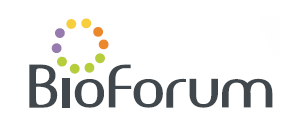
Preparation of MIL-100 (Fe) and MIL-101(Fe)
Ahmet Sirkecioglu, Department of Chemical Engineering, Istanbul Technical University, Istanbul, Turkey
Mehran Aliari Miavaghi, Department Of Chemical Engineering, Istanbul Technical University, Istanbul, Turkey
Metal organic frameworks or MOFs are the latest class of porous materials which are indeed very important solids because of their potential applications in gas storage, adsorption, separation, or catalysis. Among the tens of thousands of known MOFs, the MIL family with trivalent metal centers and carboxylate bridging ligands has particularly attracted a great deal of attention due to their enhanced stability, enormous porosity, and very large pores. These porous inorganic-organic materials are potentially efficient to use as drug carriers in drug delivery systems. In the domain of health, there are important challenges to delivery of drugs in the body using non-toxic and biologically friendly nanocarries. The synthesis of porous hybrid materials via hydrothermal or solvothermal methods requires several days. Since shorter reaction times are more attractive for industrial-scale production, syntheses using microwave irradiation can be a viable option. Preliminary molecular simulation studies show that MIL-100 (Fe) and MIL-101(Fe) are both have potential to be used as drug carriers, especially steroids. In this study MIL-100(Fe) and MIL-101(Fe) were synthesized by using microwave irradiation method. The optimization of yield, crystallinity, and particle size was achieved through the control of synthetic parameters such as temperature, heating rate, and dwelling time. The ∼400 nm particles were characterized using a variety of methods, including SEM, XRD, nitrogen adsorption measurements, TGA and particle size analyzer. Results show that the prepared samples have high crystallinity, outstanding surface area, large pores, and the ability to incorporate functional groups into the framework.
Organized & Produced by:

POB 4043, Ness Ziona 70400, Israel
Tel.: +972-8-9313070, Fax: +972-8-9313071
Site: www.bioforum.co.il,
E-mail: bioforum@bioforum.co.il